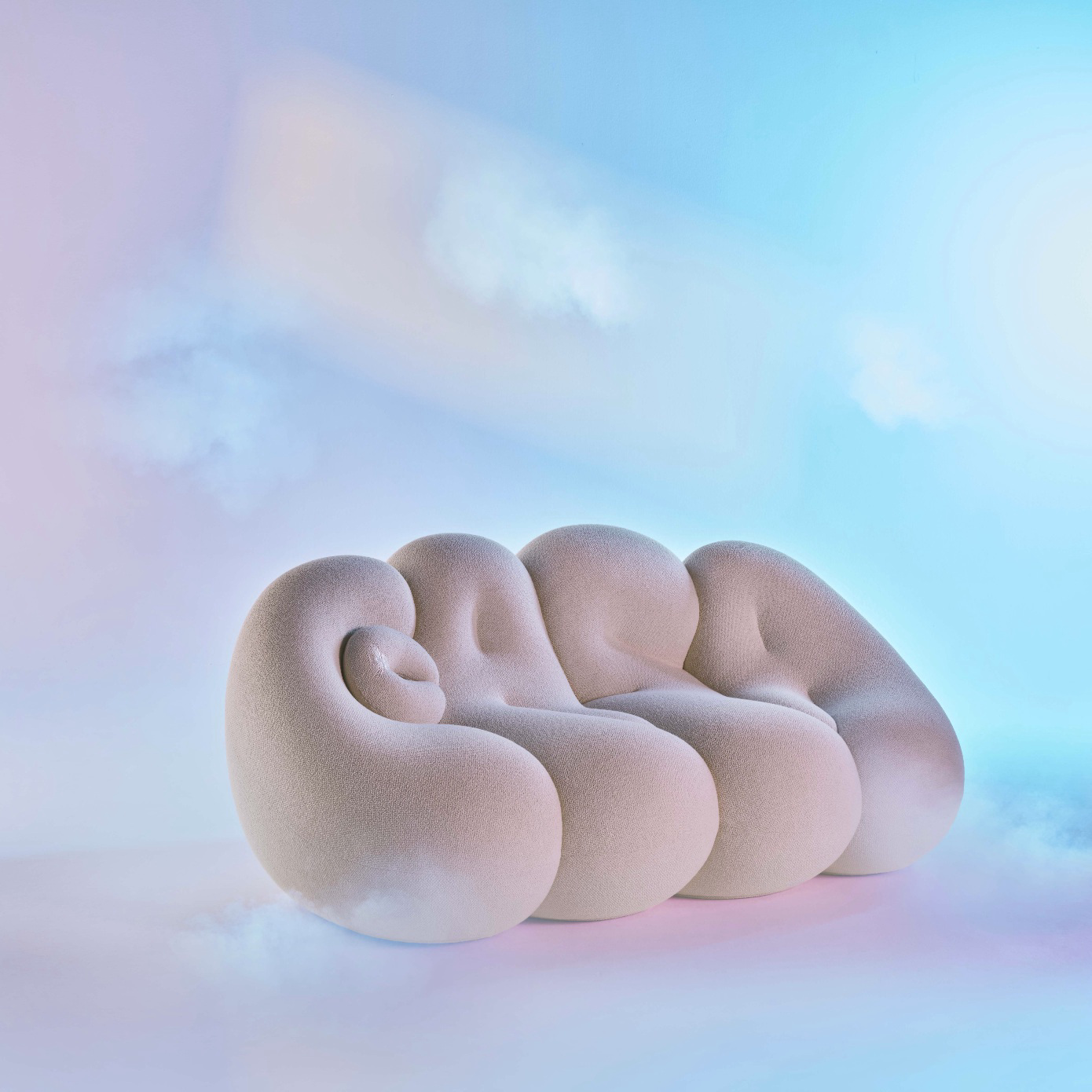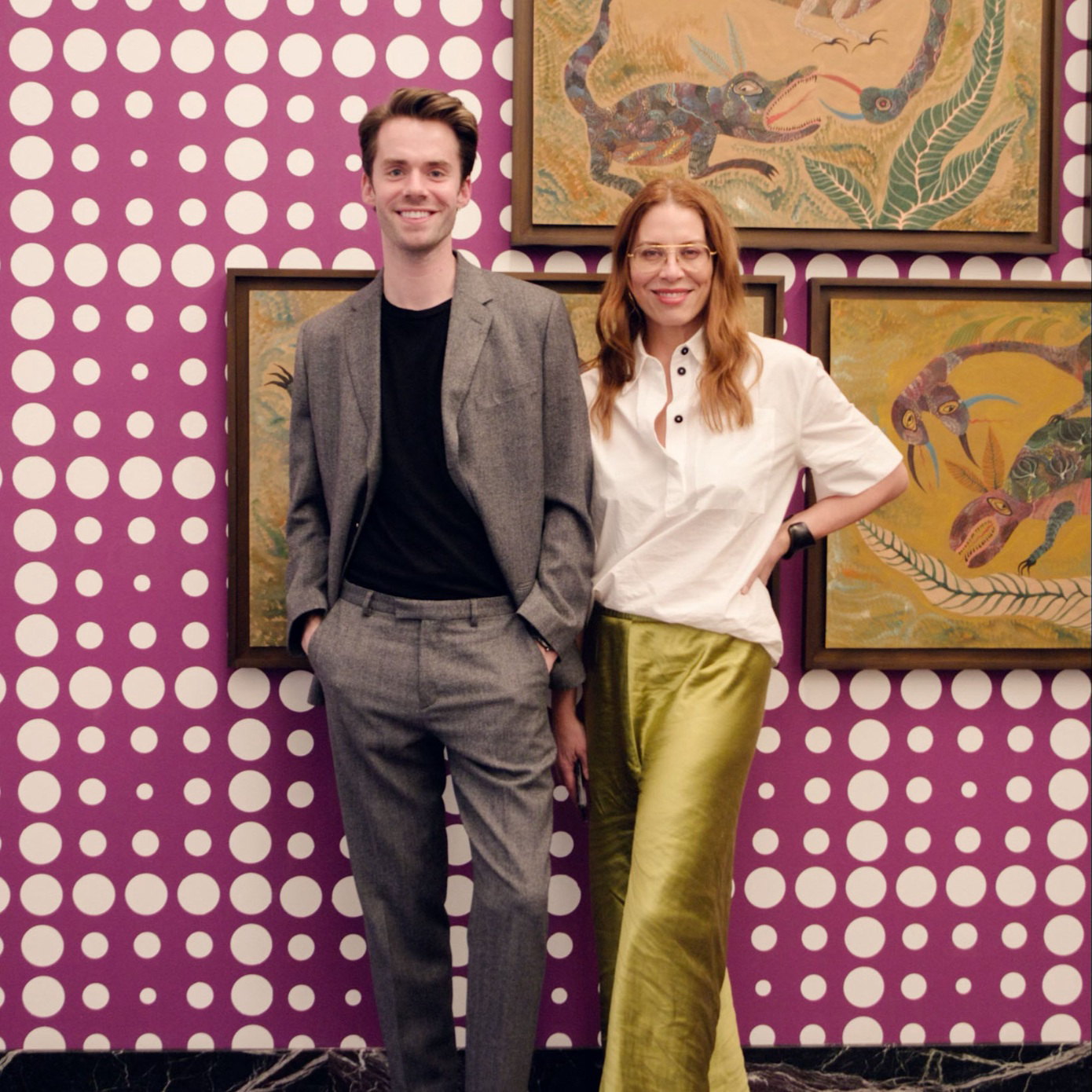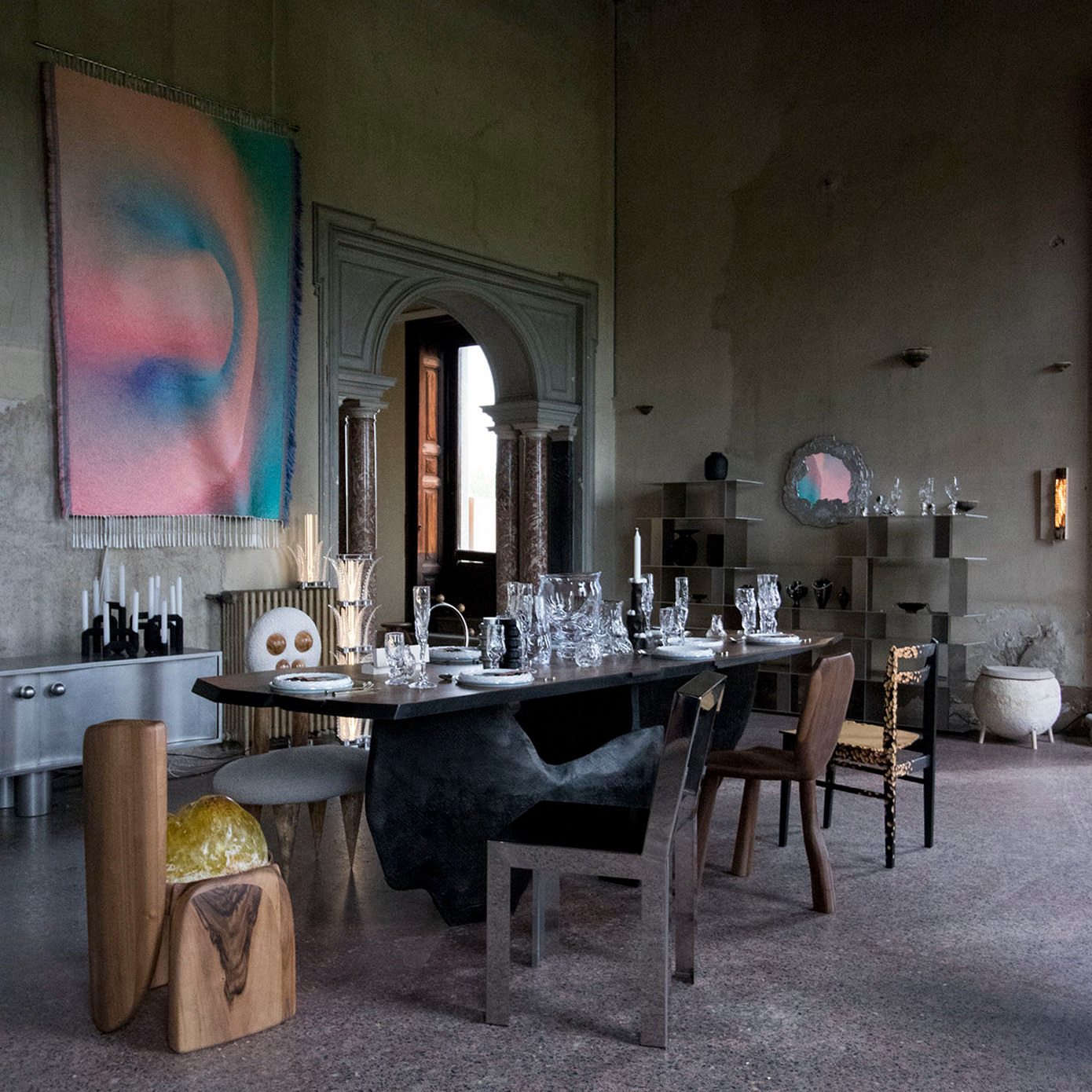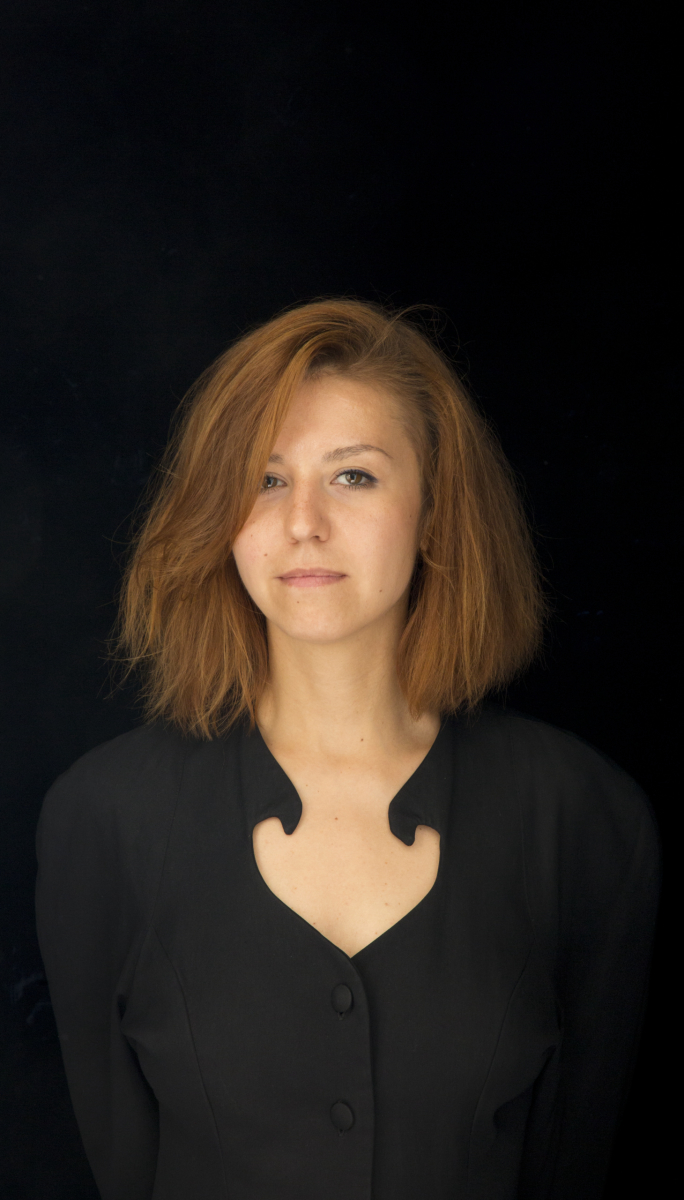
Informed by the disconnect between architectural idioms and daily life, FORMS is a new bag company more interested in physical interaction with its customers than who they are. The brainchild of Moscow-born architect and artist Anastasia Komar, FORMS so far has put forth a minimalist set of leather goods, which take inspiration from the surprisingly pleasing patterns found in the mundane manmade.
Functionality has a style and texture of its own, one that Komar cleverly riffs off of when creating graphic sleeves of black and metallic (some large enough for keys and a phone, others for a laptop), braille-embossed clutches and generous yet sharply geometric farmer’s market sacks. Komar answers our top five questions about her seamless transition from one discipline to another and what comes next for this wing of her practice.
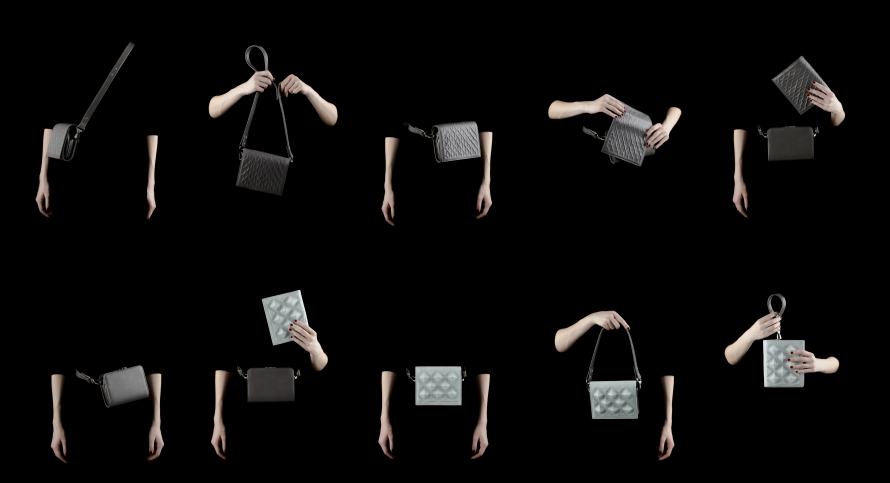
Tina Shriek: Fashion is a kind of third act for you in that you already had a functioning artand architecture practice. What made you want to slip into more bodily scaled objects?
Anastasia Komar: I needed to explore some concepts outside of macro settings. Many architects have trouble with details and corporeality, especially while working on a larger scale. Most of the time you work at your desk. You don't have time to learn the process of making; you get overloaded with documentation and endless edits so you end up spending most of the time in digital not physical situations.
Another reason I turned to a smaller scale was my fascination with our sensorial ability to perceive the environment. This exploration led me to start making accessories with a prevalent tactile aesthetic.
TS: Are there any traces of Moscow’s art history in these bags for you? I see a shared focus on graphic elements for storytelling—your bags made me think of the Melnikov house.
AK: There are hints of the constructivist laboratories Vkhutemas from which my architectural academy originated. There are also pieces inspired by Nikolai Suetin's architectonics and spatial compositions in Ivan Kluin's works. Some of the structural and surface ideas came from Kizhi traditional Russian wooden architecture and Melnikov house, of course. Anytime I have a chance to pass by I can't stop being amazed by how small the layout of the building is from the outside, and how spatial is his studio space inside.
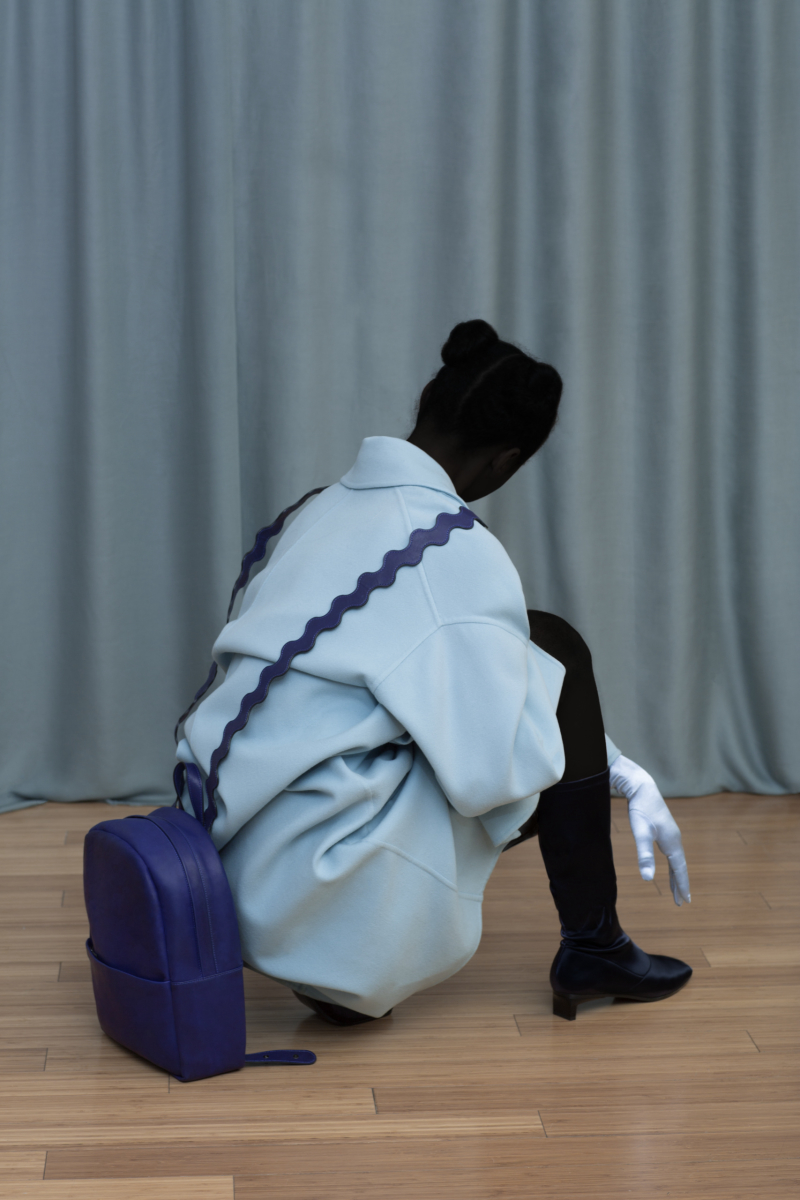
TS: Can you see opening a retail shop?
AK: Reminds me of an interesting thought I read from Rem Koolhaas’s book Harvard Design School Guide to Shopping: "Once, shopping needed the city to survive, now, the urban has been reduced to a theme of shopping."
It’s just amazing to realize that twenty years ago he saw what is happening now so clearly. It would be great to have a local hangout or experimental spot more than a retail representation.At the moment you can find all FORMS garments at the online store, or leave a request for your special commission.
TS: How do the bags relate to your larger environmental projects?
AK: I have no special structure. Most of the time, ideas for bags grow naturally from my research for architectural projects, observations of construction sites and building materials.
Once I received some custom-made details from my contractor and they were wrapped in a bubble wrap that I hadn't seen before. It almost felt like something that was also custom-made, even crafted in some way. This made me explore the surfaces of domestic use and make a collection of leather textures that mimic readymade mass-produced materials.
TS: Would you try designing wearables in the future?
AK: Maybe. All these data collecting gadgets gives me a shiver. I know, data is important but just feel we turned to a no way back road in terms of personal privacy.
Something that I would be really happy working on are accessories or objects that expand rehabilitation applications and biomedical engineering without surgical intervention, an accessory that you can put over the skin and turn on to stimulate necessary neural regions.
Craving more culture? Sign up to receive the Cultured newsletter, a biweekly guide to what's new and what's next in art, architecture, design and more.

